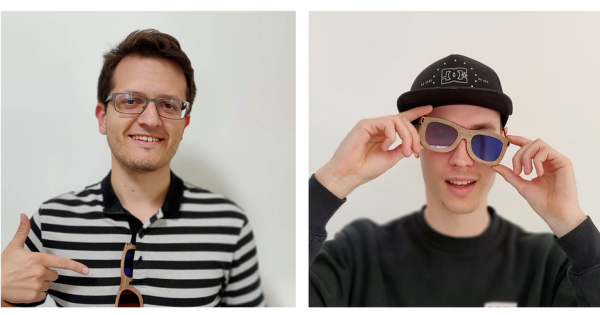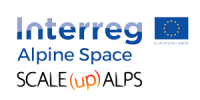Smart Optometry: innovative digitalization of eye diagnostics
27. 09. 2019

Since its foundation in 2015, Smart Optometry released two products to the market. The first one is an eye diagnostics app Smart Optometry, with over 75,000 users around the world. The second solution the company designed is AmblyoPlay - a special game for children up to 14 years of age, who have amblyopia - more commonly known as lazy eye. Amblyopia is a form of myopia in one or both eyes, present in about 15 percent of children. In most cases, the affected eye is healthy but has lower visibility because it fails to work properly with the brain. Amblyopia is present mostly in younger children and is commonly treated with eye patching of the healthy eye to force the weak eye to work more. Regular daily patching improves sight over time. However, patching for several hours daily can be unpleasant and stigmatizing for children, who consequently have a difficult time complying to the treatment. AmblyoPlay enables sight improvement in a fun and friendly way.
Smart Optometry was founded by a team from Idrija - Žan Menart, Matic Ozebek, and Blaž Grah. The CEO of the company Žan Menart explained the beginnings of the company and its current challenges.
You are international relations specialist and economist. How does an economist become an eye specialist?
This happened by coincidence. Our company has three founders and one of them - Matic Vogrič - is an optometrist. While working in the optic in our hometown one summer, he got a call from an elderly lady asking if he could visit her immobile husband at home. While the optometrist was packing all the needed equipment for the home visit, he started thinking if there was a way to design a more convenient digital form of all the required tools. He was studying in England at the time and decided to research the interest for such a solution among eye specialists for his thesis. He then asked his friend, who is now the second founder, to help him create the digital eye exam app, which they did for Matic's practical part of his thesis. In the end, I was invited to join and take over the business side of the new company.
Smart Optometry currently offers two products: diagnostic helping app Smart Optometry and AmblyoPlay for children with lazy eye. What triggered the interest for a very specific children's disease, given that you started in general diagnostics?
An ophthalmologist from the University Eye Hospital Ljubljana, who used our app, reached out to us. She was wondering if we could design anything for children with lazy eye. Older generations often see smartphones and tablets as gaming tools but seeing the clinical usability of our app got the doctor thinking about the positive effect a digital solution might have on children. We began working on AmblyoPlay.
Quite a few competitors on the market are addressing this need.
True, but before designing our solution, we did our homework and studied the competition. We noticed several weaknesses in competitive products. Some of the digital games were very boring, and the second issue with most solutions was that eye patching was still required. In order to improve individual's vision, one needs to use both eyes at a certain point. Creating a solution that requires the use of both eyes early on in treatment was our starting point and is our greatest competitive advantage today. Both eyes are used during the training with AmblyoPlay; we integrated real-time assessment of the user's progress, in order for the app to adapt difficulty level to individual's needs over time.
In which countries is AmblyoPlay most successful so far?
We have about 400 users who found us without any marketing efforts. Most users, around 70%, are from the US, followed by Slovenia and other, mostly European countries.
If we return to the Smart Optometry app; the primary associations when thinking about routine eye exams, are the detection of nearsightedness, farsightedness or color blindness. Smart Optometry offers more than 15 different routine eye exams. What is their main advantage compared to classical, non-digital approaches?
The essential advantage is the convenience of the tools in a digital form. Because the tools are on a tablet, the examiner doesn't have to carry around a diverse set of physical tools. Smart Optometry works great for general screening, giving specialists the information regarding further needed eye exams for the final diagnosis. Realistically, we see that specialists use our app for different purposes. In India, Smart Optometry works as the primary diagnostic tool in rural areas that lack medical facilities. In the USA, specialists use the app as a screening tool for a general check-up before performing specific exams. It should be noted, that our app is in no case a stand-alone diagnostic tool which would replace other existing diagnostic tools.
Does Smart Optometry classify as a medical device?
After the described first stages of the company, all we did was translate existing eye tools in a digital form with an added interactivity. We worked closely with dr. Matjaž Mihelčič, individual doctors in Matic Vogrič's network, who subsequently tested the first iterations of the app. We are deliberately classified as a tool, not a medical device because the sheer number of different devices on the market and their variations in screens, brightness of screens, color coding, etc., makes it almost impossible for us to assure standardization across devices. Additionally, by deciding against classification as a medical device, we avoided lengthy certification processes.
...and consequently, the delays in product releases and costs related to certifications.
Exactly. We had numerous discussions with experts from our field regarding whether or not we should qualify as a medical device. In the end, experts from an incubator in Chicago argued that AmblyoPlay can be defined as training and as such falls into wellness category.
Doctors tend to be reserved towards marketers and entrepreneurs without a medical background. How did you approach this issue in the scaling process?
We were recently ranked as the second must-have app for eye specialists, according to Optometry Times. Smart Optometry has 75,000 users globally. An important factor for such a successful user acquisition is that the app is freely available for download. In the process of defining the best go-to-market strategy, we surveyed 400 specialists around Europe to determine the interest in the product and the reasonable price of the product. Most specialists answered they'd be interested in a digital screening solution and would be willing to pay up to 100 euros for it. We set the price of the Smart Optometry app at 30 euros. This was a mistake, because we failed to take into account the relatively small price elasticity of mobile apps. We then decided to make the app freely available.
If the app is free, what is the business model of the company?
We offer various subscriptions for AmblyoPlay. With 75,000 users, Smart Optometry became an attractive channel for advertisers in the field of ophthalmology. We adapt advertisements to specific markets. Our existing and growing user database also gives us an advantage in scaling new products in the future, because we can easily notify a large pool of specialists who already trust us about our new releases.
What is your main challenge in further growth of the company and the scaling of your solutions?
We're currently looking at improvements of our sales and marketing efforts. We're participating in Healthday's DIH program and the Health Venture Lab accelerator, organized by EIT Health in GE Healthcare, which helps us in further development strategy.
What are your further plans?
This year, we're going to start a clinical study for AmblyoPlay in Slovenia. We're in the phase of evaluating our submission to the ethical committee. Our goal is to include 100 children in a year and a half and follow their progress with AmblyoPlay after three months, six months, and after a year. If we wish to present the solution in clinics abroad, we need clinical evidence to support our findings. So far, 35 children tested AmblyoPlay before the first release, but that research was focused primarily on the user experience of the app.

